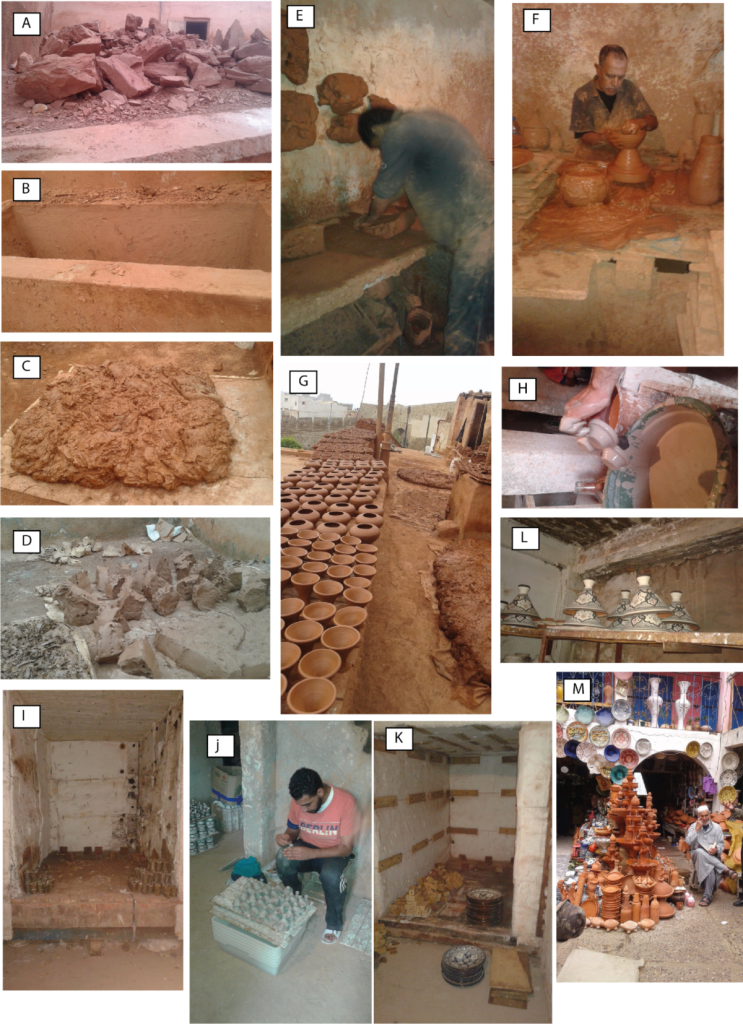The role of handicrafts in promoting self-sufficiency and entrepreneurship

Unlocking the Potential of Handicrafts
Handicrafts serve as a powerful medium for creativity, culture, and commerce, significantly impacting self-sufficiency and entrepreneurship. In today’s uncertain economic climate, many individuals are turning to the age-old tradition of crafting as a viable means to generate income and gain independence. The growing popularity of handmade goods reflects a deeper societal shift toward sustainability and personal empowerment.
Crafting is not just an activity; it is a catalyst for economic rejuvenation, where artisans create value and drive innovation. Consider the following aspects of handicrafts and their influence:
- Economic Benefits: Handicrafts can boost local economies by increasing job opportunities. For instance, small-scale artisans can fulfill niche markets by creating customized products that often command higher prices than mass-produced equivalents. In communities across the Midwest and Northeast, local craft fairs and farmers’ markets serve as platforms for art-to-market transitions, effectively circulating money back into local economies.
- Skill Development: Crafting fosters valuable skills like product design, marketing, and budgeting. Participants in local workshops not only create tangible products but also learn to navigate the complexities of running a business—from sourcing materials to pricing their goods. Initiatives like SCORE (Service Corps of Retired Executives) provide invaluable mentorship, guiding aspiring craftspeople in honing these essential skills.
- Community Building: Craft markets and workshops can unify individuals, encouraging collaboration and support. Social spaces dedicated to crafting, such as makerspaces, allow like-minded creators to collaborate on projects and share resources. This not only nurtures creativity but also instills a sense of belonging as hobbyists and professionals alike gather to exchange ideas, leading to potential partnerships and camaraderie.
- Cultural Preservation: Handicrafts often encapsulate local traditions, ensuring they are passed down through generations. For example, Native American artisans create intricate beadwork and pottery that tell stories of their heritage. Such crafts provide insights into different cultures while ensuring these traditions remain alive amidst a fast-paced modern world.
In the United States, artisans are finding success through platforms like Etsy and local craft fairs, showcasing the versatility of handicrafts. With a projected increase in e-commerce, online sales of handmade items have skyrocketed, leading to a steady stream of income for countless creative entrepreneurs. The rise of the *DIY* movement further emphasizes how these hand-created items are not just products; they are stories waiting to be told. Workshops and tutorials available online inspire others to take up crafting, promoting a sustainable, hands-on approach to consumerism.
As we delve into the world of handicrafts, it becomes evident that these tangible creations not only enrich our lives but also pave the way for innovative entrepreneurs seeking freedom and self-sustainability. By integrating tradition with creativity, handicrafts not only sustain livelihoods but also contribute to a larger narrative surrounding community and resilience.
EXPLORE MORE: Click here to discover innovative craft techniques

Handicrafts as a Pathway to Economic Independence
The artisanal movement surrounding handicrafts represents a significant shift towards self-sufficiency and entrepreneurship in the United States. As individuals seek alternatives to traditional employment, crafting has emerged as a fulfilling and often lucrative pursuit. This sector not only embodies the spirit of creativity but also serves as a launchpad for those aspiring to be self-reliant.
One of the most compelling advantages of engaging in handicrafts is the tangible economic potential they offer. Many artisans discover that what began as a passion or hobby can evolve into a profitable business. Here are several key factors contributing to this economic transformation:
- Niche Markets: Artisans catering to specific audiences can create personalized products that resonate with consumers. Unique items like customized jewelry, hand-painted ceramics, or eco-friendly home decor often yield higher prices compared to mass-produced goods, appealing to a market that values originality and authenticity.
- Access to Online Sales Platforms: With the rise of e-commerce, platforms such as Etsy, Amazon Handmade, and Shopify have made it easier for artisans to set up online stores. These platforms empower creators to reach a global customer base, thus broadening their sales potential beyond local markets.
- Low Start-Up Costs: Many handicraft businesses require minimal investment upfront. Individuals can often start with materials found around their homes or locally sourced supplies. This low barrier to entry democratizes entrepreneurship, allowing anyone with creativity and resourcefulness the chance to thrive.
- Flexible Work Hours: Handicraft entrepreneurship allows for a flexible schedule, enabling individuals to balance other responsibilities, such as family obligations or part-time jobs. This adaptability is incredibly appealing to those seeking a sustainable work-life balance while building their businesses.
Furthermore, local and state initiatives supporting small businesses and artisan markets play a pivotal role in fostering entrepreneurship. Organizations such as the Small Business Administration (SBA) offer resources tailored to craftspeople, providing guidance in business planning, marketing strategies, and financial management. Such support helps differentiate successful artisans from those who may struggle without proper guidance.
Moreover, the impact of craft fairs cannot be underestimated. Events like the Renegade Craft Fair or local artisan shows provide a thriving marketplace for creators to showcase their products. These venues not only facilitate sales but also allow artisans to network with other entrepreneurs, opening doors to collaborations and mentorship opportunities. Such interactions contribute to creating a vibrant ecosystem of creativity and business acumen.
Handicrafts thus serve as more than mere projects or hobbies; they cultivate independence and offer aspiring entrepreneurs the means to navigate their financial futures. The collective movement toward craftsmanship embodies a powerful practice of self-sufficiency, burgeoning entrepreneurial opportunities, and a return to valuing handmade goods in an age dominated by mass production.
| Advantages | Description |
|---|---|
| Cultural Preservation | Handicrafts embody local traditions and skills, ensuring they are passed down through generations, fostering a sense of identity. |
| Economic Empowerment | They create opportunities for entrepreneurs to generate income, allowing individuals to become financially independent and self-sufficient. |
| Sustainable Practices | Handicrafts often utilize renewable resources, contributing to ecological preservation and reducing environmental impact. |
| Community Building | Handicraft initiatives foster collaboration within communities, enhancing social ties and supportive networks. |
Handicrafts serve not only as artistic expressions but also as powerful tools for self-sufficiency and entrepreneurship. By engaging in this traditional form of commerce, artisans can successfully navigate the economic landscape while simultaneously preserving their cultural heritage. The integration of handicrafts into local and global markets also enhances the visibility of indigenous skills, thereby promoting sustainable economic growth. Furthermore, entrepreneurs often find that starting a handicraft business requires minimal financial investment, making it accessible for many aspiring business owners.As more consumers show interest in unique, culturally rich products, the demand for handcrafted goods rises. Thus, artisans can leverage the available technology and e-commerce platforms to showcase their designs globally. The movement towards supporting local artisans and sustainable practices is gaining momentum, and individuals who tap into this trend can become not only successful business owners but also advocates for their communities.
EXPLORE MORE: Click here to uncover the benefits of music therapy
Building Community and Skill Development
The remarkable journey towards self-sufficiency through handicrafts is not solely about launching individual businesses; it also plays a vital role in community building and skill development. As more people delve into crafting, a ripple effect emerges that fosters connections and collaborations among artisans, enhancing both local economies and individual growth.
One of the most striking benefits of the handicraft movement is the creation of local artisan networks. Whether through social media groups or localized craft collectives, artisans increasingly come together to share knowledge, resources, and support. These networks act as incubators for creativity, with members exchanging techniques, ideas, and even materials. In urban settings, community craft workshops or “make-and-take” events serve as informal meet-ups for aspiring and seasoned artisans alike to hone their skills while forging relationships that can last a lifetime.
Further enriching this ecosystem are established arts and crafts schools that offer workshops and certification programs. From pottery to woodworking, these educational opportunities not only enhance abilities but also provide vital business skills such as marketing, pricing, and customer service. Some institutions even collaborate with local artisan guilds to host mentorship programs, enabling novices to learn directly from successful artisans. This combination of skill development and mentorship is essential for ensuring that the next generation of artisans is equipped with the tools they need to succeed.
Extending beyond personal skill acquisition, the significance of cultural preservation within handicrafts cannot be overlooked. Artisans often draw inspiration from their regional histories and traditions, enabling them to create works that resonate deeply within their communities. This revitalization of traditional crafts not only solidifies cultural identity but also encourages sustainability as people look for ways to keep these age-old practices alive. For example, indigenous artisans in the United States are increasingly using traditional methods to create contemporary goods, providing both a powerful statement of identity and a means of economic self-reliance.
In tandem with cultural preservation, regional artisan markets have sprung up across the nation, celebrating local craftsmanship. Initiatives like farmers’ markets often incorporate craft stalls, allowing artisans to showcase their products to a wider audience while supporting other local businesses. These venues not only stimulate sales but also strengthen community connections, as neighbors engage in a shared appreciation for local talent. Additionally, events such as the American Craft Council’s Craft Week highlight the dedication to the craft community, helping artisan businesses grow while raising awareness about their value in an increasingly consumer-driven economy.
The intertwining of handicrafts with local economies amplifies their role in promoting self-sufficiency. As artisans thrive, they give back to their communities through local spending, donations, and social engagement. This cycle of support creates a robust framework where individual success translates into collective prosperity.
As handicrafts continue to flourish and inspire entrepreneurship, they set the stage for an enriching landscape where creativity meets economic empowerment. The ongoing development of artisan networks, educational opportunities, and cultural revitalization illustrates the profound impact of handicrafts, solidifying their place as a key player in the push for self-sufficiency and entrepreneurship in the United States.
DISCOVER MORE: Click here to learn how art can change lives
Final Thoughts on Handicrafts as Catalysts for Economic Empowerment
In conclusion, the role of handicrafts in promoting self-sufficiency and entrepreneurship cannot be overstated. As we have explored, the intricate tapestry of artisan activities not only cultivates individual skills but also enriches community bonds. The rise of local artisan networks and collaborative spaces illustrates how a collective approach can lead to unexpected innovations and business opportunities. When artisans share their craft and support one another, it strengthens the social fabric of communities while fostering a thriving marketplace for unique goods.
Moreover, the emphasis on cultural preservation within handicrafts serves as a powerful testament to the importance of identity in an ever-changing economic landscape. By integrating traditional techniques with contemporary practices, artisans uphold their cultural heritage while contributing to local economies. Events and markets dedicated to handmade goods have become essential platforms for artisans to showcase their talents and reach broader audiences, consistently reminding consumers of the value of locally made products.
As we look ahead, the potential for handicrafts to serve as catalysts for self-sufficiency remains promising. The commitment to skill development, cultural revitalization, and community support can drive the rise of entrepreneurship that is not only economically beneficial but also socially enriching. The challenge lies in continuing to foster these initiatives to ensure that the arts and crafts sector remains lively and impactful. By investing in handicrafts, we are ultimately investing in sustainable futures—both for artisans and the communities they touch, making it a movement worthy of attention and support.


